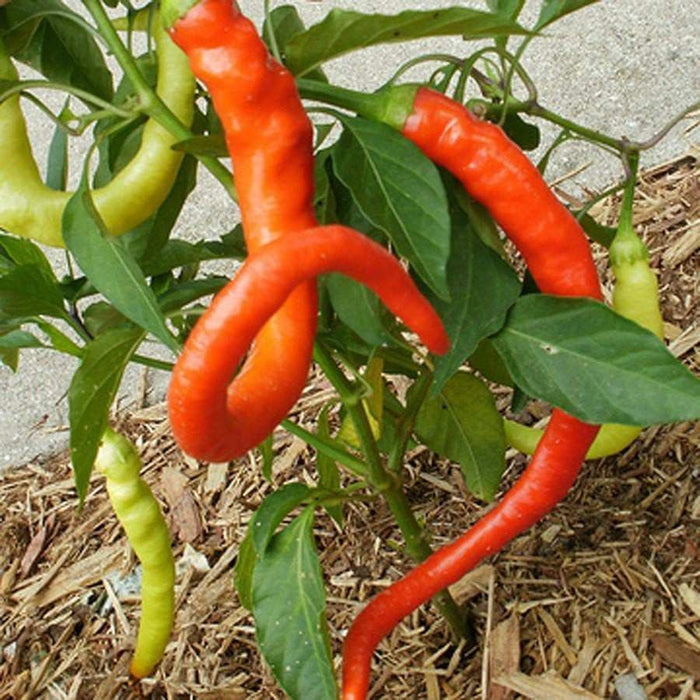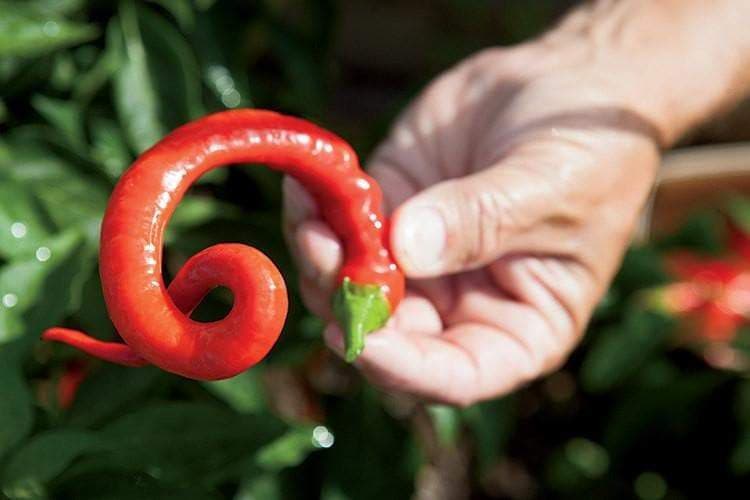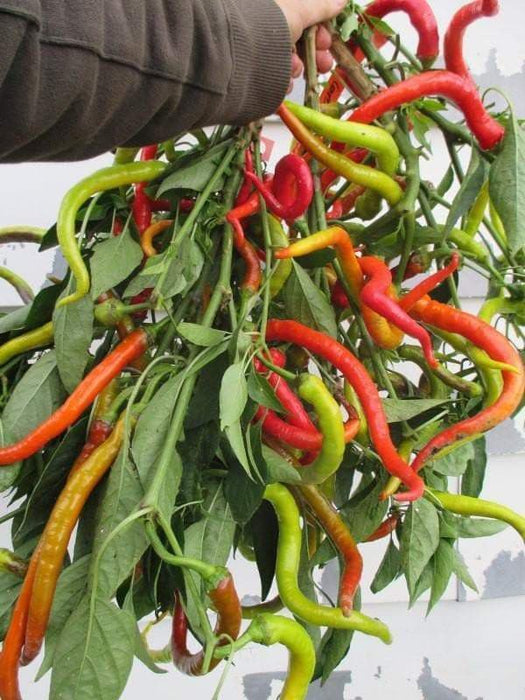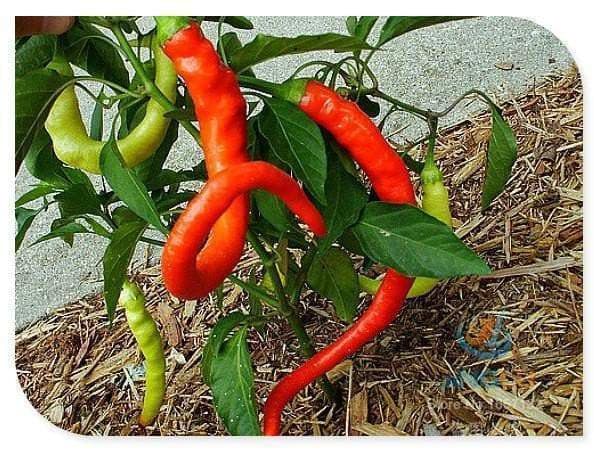
CORBACI PEPPER Pepper Seeds , CAPSICUM ANNUUM, from Turkey.
Original price
$ 2.95
-
Original price
$ 50.95
Original price
$ 2.95
$ 3.29
$ 3.29
-
$ 47.29
Current price
$ 3.29
Most orders are processed by the next day
Select your desired size and/or color from the available options.
Our Pepper seeds are rare originals passed down over generations to be pure, Non-GMO seeds you can count on.
CORBACI PEPPERA unique and wonderful sweet pepper. Very long 10-inch fruit are curved and twisted, very slender, like a Turkish scimitar. This rare heirloom from Turkey has a very rich flavor, perfect for pickling or frying. One of the most productive of all peppers.
Sowing: Peppers can be started indoors about 8 weeks before the last frost is expected. Sow the seed 1/2cm deep in a well-drained starting medium. Seeds require a warm environment to germinate; your growing medium should be between 20 - 35 degrees C with 30C being the ideal. Using a heat mat (available at home and garden stores, hardware stores and even pet shops) can help to ensure ideal conditions. Additionally, young starts will fare much better with additional light. Place in a window or sunny location that receives lots of sun exposure. Consider supplementing with artificial lighting if possible.
Planting: Set plants out 2 to 3 weeks after the last frost when the soil has warmed and the weather has settled. Peppers can be temperamental when it comes to setting fruit if temperatures are too hot or too cool. Nighttime temperatures below 15C or above 23C can reduce fruit set.
Tip: Wait until soil temperatures exceed 10 degrees C at all times before placing into the ground. Pepper plants can be fairly close to one another, so that there is slight contact between plants.
Growing: Peppers need a steady supply of water for best performance but be careful not to overwater. A well drained soil will prevent water-logging. If fertilizing, be careful not to overdo it on nitrogen as this will give you nice lush and leafy plants but will deter fruit growth. Organic fertilizers and soil should be rich in phosphorus, potassium and calcium.
Mulching with black plastic or similar material is a good way to maintain heat and soil moisture. Additionally, floating row covers over your beds can help to protect against cold early in the growing season. Use caution with row covers not to overheat plants and cause them to drop their blossoms.
Tip: Stake tall varieties for earlier and heavier harvest.
Harvesting: You can pick bell type peppers, when they are smaller, in the beginning of summer. They may be taken when they are the size of a golf ball and frequent picking will encourage near-continuous fruit production. Immature bell peppers are soft and pliable with thin pale walls.
Otherwise, take fully mature bell peppers when they are 10 to 12cm long and have full, well-formed lobes. The older the fruit is, the thicker the skin will be.
Tip: Allow peppers to ripen to their final color later in the season to get fruit of different colors. Ripe peppers may be yellow, red, orange or purple, depending on the variety. You can continue to harvest peppers until the first frost.
Growing Hot Peppers in Containers
Peppers can be grown all year long in containers. It is suitable for apartment dwellers and gardeners who live in cool regions where the number of growing days are limited. Many pepper enthusiast grow peppers in pots so they can have fresh peppers all year long. Its best to use 5 gallon containers so the roots do not get too over-crowded.
Select your desired size and color from the available option
LET OUR CUSTOMER SPEAK FOR US

![[Seeds] - Caribbeangardenseed](http://caribbeangardenseed.com/cdn/shop/files/gift-card-gift-card-1_1024x1024_dfa857db-9150-4315-a362-7f0bb3fb9c47_60x28.png?v=1703978838)



